Over the past couple of decades, as investors have been given a choice between mutual funds and exchange-traded funds, they’ve increasingly opted for the latter. And who can blame them? Mutual funds aren’t exactly known for being cheap, and they often demand hefty investment minimums, often in the thousands of dollars.
But Schwab mutual funds don’t carry around any of that baggage.
You might know Charles Schwab for its account offerings—indeed, with some 35 million brokerage accounts, and another 5.2 million workplace plan participant accounts, you might already have your investment funds run through Schwab. But Schwab is also one of the largest mutual fund providers in the nation, offering dozens of products that not only charge light annual expenses, but also require next to nothing to get started.
Speaking of getting started, let’s … well, get started. Read on as I explore some of the best Schwab funds to buy for investors who want to build a portfolio with high quality and low costs.
Disclaimer: This article does not constitute individualized investment advice. These securities appear for your consideration and not as personalized investment recommendations. Act at your own discretion.
Editor’s Note: Tabular data presented in this article are up-to-date as of Sept. 30, 2024.
Table of Contents
Why Schwab Mutual Funds?
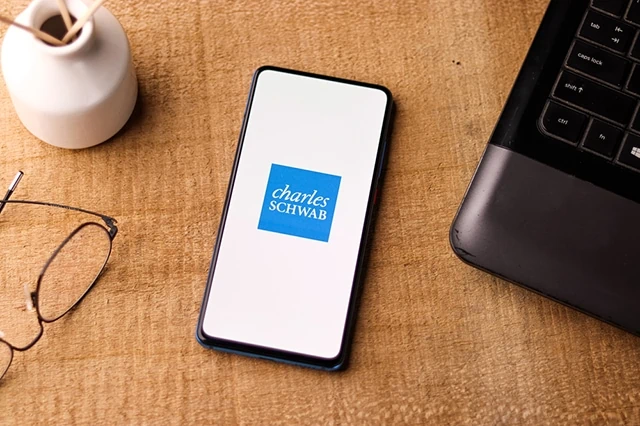
Charles Schwab is a U.S.-based brokerage and banking company founded in 1971 as a traditional brokerage company and then as a discount brokerage service in 1974. It’s the largest publicly traded investment services firm with more than $6 trillion in assets under management (AUM). And it offers a wide range of financial services, such as investment advice and management, trading services, financial planning, banking services, workplace and individual retirement plans, annuities, and more.
But why would you invest in its mutual funds?
Schwab is a low-cost leader that does provide some actively managed products, but excels through its index mutual funds. And on the whole, Schwab funds offer well-below-industry-average annual expenses.
Where Schwab really stands out, though, is from a nominal-expense perspective. Many providers’ mutual funds set minimum initial investments in the thousands of dollars. But most Schwab mutual funds require a mere $1—an ideal situation for investors who don’t have much capital to put to work.
In short: Schwab offers a variety of mutual funds, some of which are among the best on the market, and they won’t leave your wallet in tatters.
How Did We Select the Best Schwab Mutual Funds?

Schwab is a little different from other mega-sized fund providers in that it has a relatively constrained roster of just a few dozen mutual funds. So, investors sorting through Schwab’s selections won’t have nearly as bad a case of analysis paralysis.
Still, a little filtering is necessary to get us down to a more manageable list. So I’ve started with a quality screen, including only Schwab mutual funds that have earned a Morningstar Medalist rating.
Unlike Morningstar’s Star ratings, which are based upon past performance, Morningstar Medalist ratings are a forward-looking analytical view of a fund. Per Morningstar:
“For actively managed funds, the top three ratings of Gold, Silver, and Bronze all indicate that our analysts expect the rated investment vehicle to produce positive alpha relative to its Morningstar Category index over the long term, meaning a period of at least five years. For passive strategies, the same ratings indicate that we expect the fund to deliver alpha relative to its Morningstar Category index that is above the lesser of the category median or zero over the long term.”
As I’ve written in other Young and the Invested articles, a Medalist rating doesn’t mean Morningstar is necessarily bullish on the underlying asset class or categorization. It’s merely an expression of confidence in the fund compared to its peers.
From the remaining universe of funds, I selected a range of products that invest in various core assets—something to fill just about every basic portfolio need.
The Best Schwab Mutual Funds to Buy
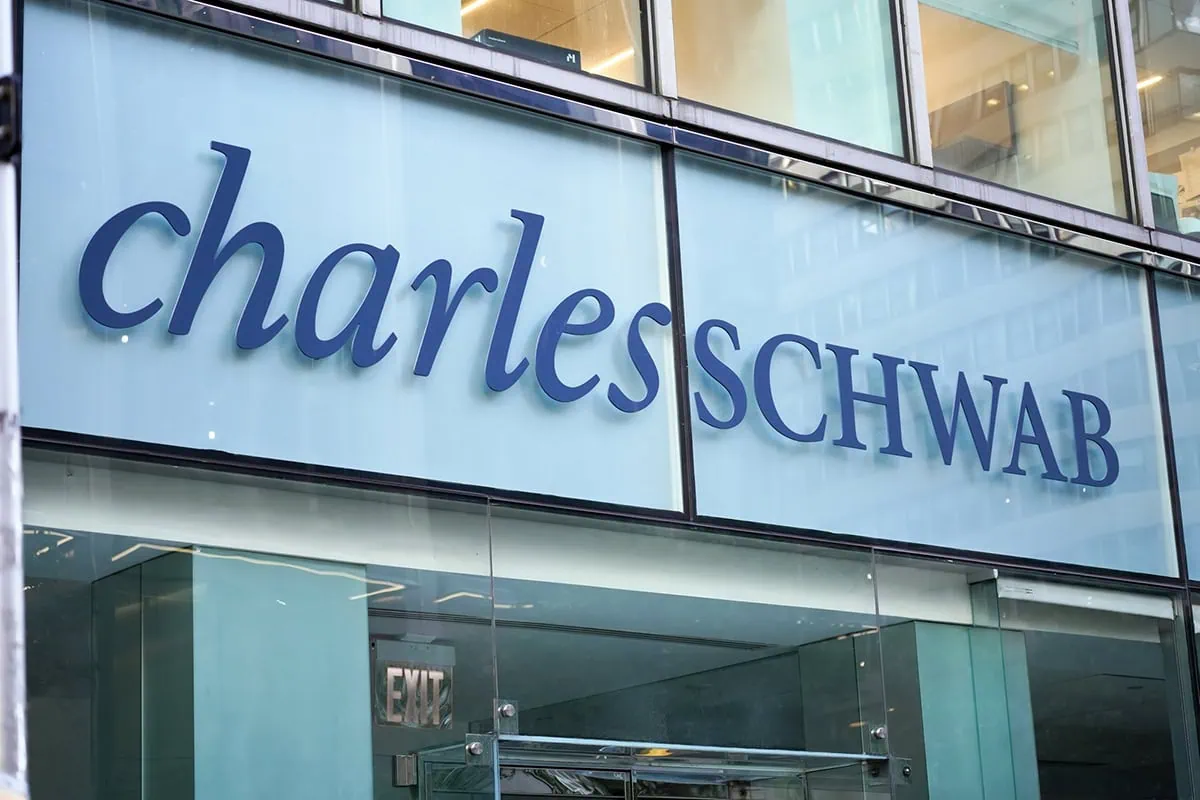
Below are some great Schwab funds that are primarily meant to serve as core portfolio investments.
All of the best Schwab mutual funds on this list are index funds. While Schwab does have a few actively managed funds, its highest-rated products are all tethered to an index. So costs, as a general rule, are quite low.
And every Schwab fund on this list has a minimum initial investment of just $1. Typically, when I’m writing about mutual funds, I try to also list ETF share classes or equivalent ETFs for investors who might have less capital to put to work. But in this case, there’s no need—even if your liquidity is limited to a fistful of nickels, you’ve got enough to get started.
In no particular order …
1. Schwab S&P 500 Index Fund

— Style: U.S. large-cap stock
— Assets under management: $101.4 billion
— Expense ratio: 0.02%, or 20¢ per year for every $1,000 invested
— Dividend yield: 1.2%
— Morningstar Medalist rating: Gold
The vast majority of fund managers who run large-cap funds (funds that invest in larger companies) struggle to consistently beat the S&P 500 Index, particularly after fees. According to S&P Dow Jones Indices, “60% of all active large-cap U.S. equity funds underperformed the S&P 500.” That’s no anomaly: Thanks to yet another 365 days of lagging in 2023, the majority of active managers have now failed to beat the S&P 500 in 21 of the past 24 years.
Related: The 7 Best Closed-End Funds (CEFs) That Yield Up to 12%
As I typically say when confronted with an S&P 500 fund: If you can’t beat it, join it.
The Schwab S&P 500 Index Fund (SWPPX) isn’t just a cheap way to get access to the S&P 500—it’s one of the cheapest ways across both mutual funds and ETFs alike, charging a razor-thin expense ratio of just 0.02%. That’s not free, but it’s mighty close.
The S&P 500 is a collection of some of the largest American companies, but to be clear, it’s not automatically the 500 largest American companies. Among criteria for this index: A company must have a market capitalization of at least $18.0 billion, its shares must be highly liquid (shares are frequently bought and sold), and at least 50% of its outstanding shares must be available for public trading. Where you start to weed out a few large companies is that, for inclusion, a company must also have positive earnings in the most recent quarter, and the sum of its previous four quarters must be positive.
And once a company becomes an S&P 500 component, it’s not automatically kicked out if it fails to meet all of the criteria. However, the selection committee would take this under consideration and possibly boot the company.
Related: 12 Best Long-Term Stocks to Buy and Hold Forever
The S&P 500 is considered a reflection of the U.S. economy—but that doesn’t mean all industries are represented equally. For instance, the technology sector accounts for nearly 30% of SWPPX’s assets. Real estate, materials, and utilities merit less than 3% apiece. This is in no small part because, like many indexes, the S&P 500 is market capitalization-weighted, which means the greater the size of the company, the more “weight” it’s given in the index. Currently, trillion-dollar-plus companies Microsoft (MSFT), Apple (AAPL), and Nvidia (NVDA) rank among Schwab S&P 500 Index Fund’s top holdings.
Turnover (how much the fund tends to buy and sell holdings) tends to be low, as only a handful of stocks enter or leave the index in any given year. That greatly minimizes (and in some years, eliminates) capital-gains distributions, which receive unfavorable tax treatment. This makes SWPPX an extremely tax-efficient option for taxable brokerage accounts.
A combination of the S&P 500’s excellence as an index, as well as SWPPX’s bare-bones costs and tax-efficiency, merit a Gold Medalist rating from Morningstar. It’s just one of three Schwab products to earn that coveted ranking, making it easily one of the best Schwab funds you can buy.
Related: 9 Monthly Dividend Stocks for Frequent, Regular Income
2. Schwab Fundamental US Small Company Index Fund

— Style: U.S. small-cap stock
— Assets under management: $1.8 billion
— Expense ratio: 0.25%, or $2.50 per year for every $1,000 invested
— Dividend yield: 1.3%
— Morningstar Medalist rating: Silver
Investors who want more explosive returns (and who can deal with higher risk) can typically find that kind of action in small-cap stocks.
As a general rule, smaller companies (usually considered to be those with market capitalizations of $2 billion or less) have more growth potential than larger firms. For one, as they say, it’s much easier to double your revenues from $1 million than $1 billion. And as these stocks become noticed by institutional investors and fund managers, or begin qualifying for certain indexes, they can begin to enjoy large-scale investments that drive their prices even higher.
Related: 7 Best High-Dividend ETFs for Income-Minded Investors
But smaller stocks are riskier. A smaller company’s revenues might be dependent on just one or two products or services—meaning a single disruption could have massive financial consequences. They also have less access to capital than their larger peers, so they’re less likely to get a lifeline should they suffer from broader economic headwinds.
It’s a high-risk, high-reward proposition—a small company could feasibly double in short order … or get cut in half overnight.
You can, however, harness some of these firms’ upside potential while tamping down on risk by investing in a small-stock fund like Schwab Fundamental US Small Company Index Fund (SFSNX). This Schwab product differs from your traditional small-cap index fund in that, rather than weighting its components by size, SFSNX effectively weights its roughly 1,000 holdings by quality. It tracks the Russell RAFI US Small Company Index, which both selects and weights stocks by fundamental metrics including adjusted sales, retained operating cash flow, and dividends plus buybacks. In short: The better the fundamental quality, the more assets a stock will command.
Related: The 7 Best Dividend ETFs [Get Income + Diversify]
For what it’s worth, most broad small-cap funds have very little single-stock risk to begin with. Even SFSNX’s greatest holdings command weights of roughly half a percent or less, and that’s par for the course. But how the fund assigns those weights makes a huge difference—SFSNX has solidly outperformed its basic-index counterpart, the Schwab Small Cap Index Fund (SWSSX), over every meaningful trailing time period.
Related: 5 Best Vanguard Dividend Funds [Low-Cost Income]
3. Schwab US Mid-Cap Index Fund

— Style: U.S. mid-cap stock
— Assets under management: $1.6 billion
— Expense ratio: 0.04%, or 40 per year for every $1,000 invested
— Dividend yield: 1.4%
— Morningstar Medalist rating: Gold
Mid-cap stocks are typically considered to be companies worth $2 billion to $10 billion by market capitalization. And they’re often referred to as the “Goldilocks” of the stock world.
That’s because they often carry some appealing traits of both their larger brethren (scale, more diverse revenue streams, good access to capital) and smaller firms (they’re nimble, and they have substantial upside potential). Funnily, though, that often means they’re ignored by people who gravitate either toward big, “safe” blue chips or potent small-caps. That’s a big mistake.
Related: 7 Best Schwab ETFs to Buy [Build Your Core for Cheap]
Here’s what investment company Hennessy Funds found in a study of mid-caps: “In any given 1-year rolling period since 2003, small-, mid-, and large-cap stocks have outperformed 33%, 26%, and 41% of the time. However, the longer mid-cap stocks are held, the more often they outperformed. In fact, 60% of the time, mid-caps outperformed small- and large-cap stocks over any 10-year rolling period in the past 20 years.”
Better still? During the 20-year period (through 9/30/23) that Hennessey studied, they found that while mid-caps delivered higher risk than large-caps, they delivered better returns … and they generated both lower risk and higher returns than small caps.
Related: 7 Best Fidelity ETFs for 2024 [Invest Tactically]
So, if you like your stocks like Goldilocks likes her porridge—”just right”—you can access these companies through the Schwab US Mid-Cap Index Fund (SWMCX). This fund, which tracks the Russell Midcap Index, holds 800 stocks, about 75% of which are mid-cap stocks. It might sound odd, but it’s actually quite normal. “As the mid-cap space is less defined than its large- and small-cap counterparts, major index providers differ on where to draw the borders, affecting the indexes’ market cap orientations,” says Morningstar Associate Analyst Mo’ath Almahasneh. Currently, SWMCX’s non-mid-cap holdings are heavier in small companies than bigger firms.
Like with the Schwab small-cap mutual funds mentioned above, single-stock exposure is minimal—the two greatest holdings represent only 0.6% of assets each. Unlike those products, SWMCX earns Morningstar’s highest Medalist rating, putting it at the tippy top of the best Schwab mutual funds.
Related: How to Get Free Stocks for Signing Up: 9 Apps w/Free Shares
4. Schwab Total Stock Market Index Fund

— Style: U.S. all-cap stock
— Assets under management: $25.2 billion
— Expense ratio: 0.03%, or 30¢ per year for every $1,000 invested
— Dividend yield: 1.2%
— Morningstar Medalist rating: Gold
Who says you can’t have it all?
That’s the idea behind total-market funds like the Schwab Total Stock Market Index (SWTSX), which is designed to “track the total return of the entire U.S. stock market.” Now if we’re splitting hairs, even at 3,350 stocks, you’re not actually investing in the “entire U.S. stock market” … but it’s about as close as you’d ever reasonably need to get.
Related: 7 Best Schwab ETFs to Buy [Build Your Core for Cheap]
A total-market fund typically won’t give you equal exposure to all the different stock sizes—they’re typically market cap-weighted, which naturally means they’re heavily tilted toward large caps. And so it is with SWTSX, which currently has 72% of its assets wrapped up in large caps (like with the S&P 500 fund, Microsoft, Apple, and Nvidia are top weights here), 19% in mid-caps, and the remaining 9% in smalls.
The point of a total-market fund like SWTSX is simplicity. One fund gets you exposure to most of the U.S. stock market—and it overloads you in the largest, most stable firms while providing only modest exposure to smaller, more volatile firms. Better still? You can get all this for just 0.03% in annual expenses. It’s a one-two punch of coverage and price that has been recognized with a Morningstar Gold Medalist rating, and inclusion on my list of Schwab’s top mutual funds.
Related: The 7 Best T. Rowe Price Funds to Buy and Hold
How (or whether) you use it is a matter of preference.
If you like the exact breakdown of SWTSX’s large-, mid-, and small-cap exposure, you could make it the core of your portfolio and not have to bother with any other broad U.S. stock funds.
If you like the idea of owning all these different-sized stocks, but would want to do so in different ratios, you could either hold SWTSX and augment with the funds above, or buy your ideal mixture of large-, mid-, and small-cap funds.
Related: 7 High-Quality, High-Yield Dividend Stocks
5. Schwab Fundamental International Large Company Index Fund
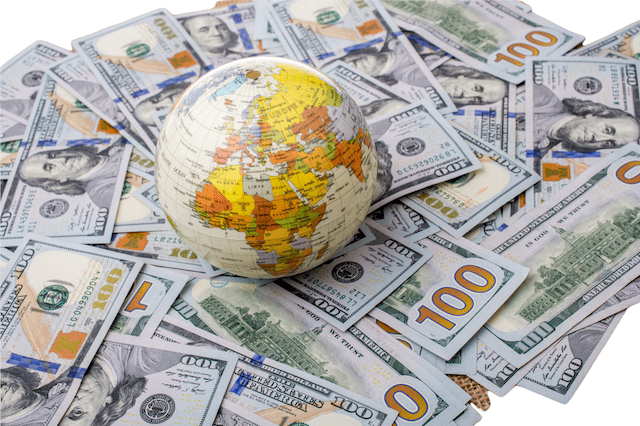
— Style: International large-cap stock
— Assets under management: $2.9 billion
— Expense ratio: 0.25%, or $2.50 per year for every $1,000 invested
— Dividend yield: 3.0%
— Morningstar Medalist rating: Silver
You’ve probably noticed by now that this list of funds, like many, is loaded with U.S.-centric options. That’s for good reason. U.S. markets have long been among the most productive in the world, and if you believe in the American economy’s ability to keep growing, that should remain the case. Thus, most financial experts here will direct you to gobble up U.S. stock funds.
But those same experts would tell you that it’s worth having at least some international exposure. And you can do that smartly and efficiently through the Schwab Fundamental International Large Company Index Fund (SFNNX).
Related: 10 Best Dividend Stocks to Buy [Steady Eddies]
This Schwab international fund is similar to Fundamental US Small Company in that it tracks a Russell “RAFI” index that prioritizes fundamental metrics—adjusted sales, retained operating cash flow, and dividends plus buybacks—when both selecting and weighting its components.
Again, from 10,000 feet, this doesn’t really make a huge difference. Top country allocations are pretty similar to what you’d get in other large-cap international funds—a heavy dose of Japan (27% of assets), and strong exposure to other European developed markets such as the U.K. (14%), France (8%), and Germany (8%). Top holdings? Similar again! Big, blue-chip firms like British energy giant Shell (SHEL) and South Korea’s Samsung. And while the dividend is indeed juicy compared to U.S. blue-chip funds, that’s also typical of most international large-cap offerings.
But SFNNX’s fundamental focus has made itself heard where it counts: performance. While the difference in returns isn’t as drastic as it was between the aforementioned Schwab small-cap funds, Schwab Fundamental International Large Company still soundly tops its basic-index counterpart, Schwab International Index Fund (SWISX), over all meaningful time frames … even with its pricier (but still cheap) expense ratio.
Related: 7 Best Schwab Index Funds for Thrifty Investors
6. Schwab US Aggregate Bond Index
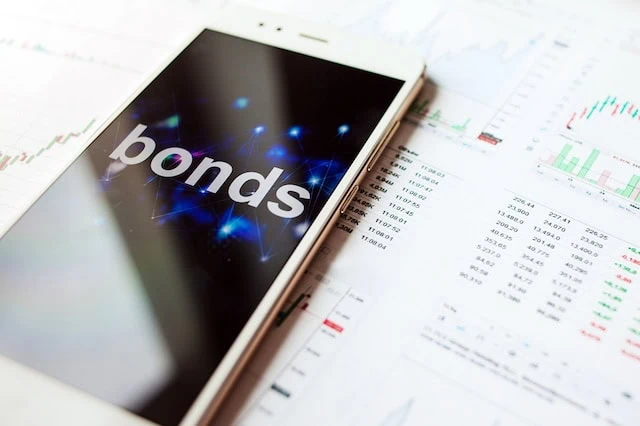
— Style: U.S. intermediate-term bond
— Assets under management: $5.1 billion
— Expense ratio: 0.04%, or 40¢ per year for every $1,000 invested
— SEC yield: 4.2%*
— Morningstar Medalist rating: Bronze
Most investors need some exposure to bonds, which is debt that’s issued by governments, companies, and other entities. Their interest payments and relative lack of volatility make them an excellent tool for providing a portfolio with stability and income.
But how much bond exposure you need will vary by age. They’re not great for generating wealth, which is your prime concern when you’re younger, but they’re outstanding for protecting wealth, which becomes increasingly pivotal as you age. So generally speaking, when you’re younger, you’ll want to be primarily invested in stocks … and as you get older, you’ll want to go lighter on stocks and start buying more bonds.
Related: 7 Best Schwab Index Funds for Thrifty Investors
You might not want to buy individual bonds, however. Data and research on individual issues is much thinner than it is for publicly traded stocks. And some bonds have minimum investments in the tens of thousands of dollars. So, your best (and most economical) bet is to buy a bond fund, which allows you to invest in hundreds or even thousands of bonds with a single click.
One of the best Schwab mutual funds you can buy for this access is the Schwab US Aggregate Bond Index Fund (SWAGX), which holds a whopping 9,400 debt issues. At the moment, 42% of the portfolio is in U.S. government bonds, another 27% is in mortgage-backed securities (MBSes), and 25% is in corporate bonds. The rest is peppered around other government-related bonds, municipal bonds, and other debt.
Related: 5 Best Fidelity Retirement Funds [Low-Cost + Long-Term]
SWAGX’s maturities range from less than a year to more than 20 years. Meanwhile duration—a measure of interest-rate sensitivity—is 6.2 years, implying that a 1-percentage-point hike in interest rates would result in a 6.2% decline in the fund, and vice versa. In short, this is moderate interest-rate risk, which is perfectly acceptable for a basic core bond holding like this.
* SEC yield reflects the interest earned across the most recent 30-day period. This is a standard measure for funds holding bonds and preferred stocks.
Related: 10 Best Vanguard Funds for the Everyday Investor
7. Schwab Target Index Funds

— Style: Target-date
— Assets under management (collectively): $6.3 billion
— Expense ratios: 0.08%, or 80¢ per year for every $1,000 invested
— Morningstar Medalist rating: Bronze
Target-date funds are the ultimate buy-and-hold instrument, meant to stay in your portfolio for literally decades.
You can read more about this type of product in our primer on target-date funds, but in short, they’re funds that shift their asset allocation over time to meet investors’ changing needs as they age. A person who’s, say, 25 in 2025 would expect to retire in 2065, so they’d buy a fund with a target retirement date of 2065. That fund would probably start out with a very heavy allocation to stocks (to grow the investors’ wealth), but as the years rolled on and the fund approached its target retirement date, it would start putting more of its assets into bonds (to protect the investors’ wealth).
Schwab offers two target-date fund series, both of which hold various funds to provide exposure to U.S. and international stocks and bonds:
— Schwab Target Funds: These hold a collection of actively managed and index funds. While most of Schwab Target Funds’ holdings are other Schwab mutual funds, they will also hold funds from outside providers, including Dodge & Cox and Baird.
— Schwab Target Index Funds: These hold Schwab ETFs exclusively.
In general, both of Schwab’s target-date fund series are economical, but the Schwab Target Index Funds are flat-out cheap, at just 0.08% in annual expenses. And at least as far as Morningstar Medalist ratings go, the Target Index Series is considered the better of the two, earning a Bronze rating.
A quick look at the full lineup:
— Schwab Target 2010 Index Fund (SWYAX)
— Schwab Target 2015 Index Fund (SWYBX)
— Schwab Target 2020 Index Fund (SWYLX)
— Schwab Target 2025 Index Fund (SWYDX)
— Schwab Target 2030 Index Fund (SWYEX)
— Schwab Target 2035 Index Fund (SWYFX)
— Schwab Target 2040 Index Fund (SWYGX)
— Schwab Target 2045 Index Fund (SWYHX)
— Schwab Target 2050 Index Fund (SWYMX)
— Schwab Target 2055 Index Fund (SWYJX)
— Schwab Target 2060 Index Fund (SWYNX)
— Schwab Target 2065 Index Fund (SWYOX)
For a longer explanation of Schwab’s target-date lineups, read our Beginner’s Guide to Schwab Target-Date Funds.
Related: The 10 Best Vanguard Index Funds You Can Buy
Learn More About These and Other Funds With Morningstar Investor

If you’re buying a fund you plan on holding for years (if not forever), you want to know you’re making the right selection. And Morningstar Investor can help you do that.
Morningstar Investor provides a wealth of information and comparable data points about mutual funds and ETFs—fees, risk, portfolio composition, performance, distributions, and more. Morningstar experts also provide detailed explanations and analysis of many of the funds the site covers.
With Morningstar Investor, you’ll enjoy a wealth of features, including Morningstar Portfolio X-Ray®, stock and fund watchlists, news and commentary, screeners, and more. And you can try it before you buy it. Right now, Morningstar Investor is offering a free seven-day trial. You can check out the current deal, as well as discounted rates for students and teachers, by visiting the Morningstar Investor website.
What is the Minimum Investment Amount on Schwab Mutual Funds?

Schwab is one of the most friendly fund companies for beginners. That’s not just because both its mutual funds and ETFs sport below-industry-average expense ratios, but because you don’t need much money to invest in them in the first place. Most Schwab mutual funds have a negligible investment minimum—you can literally start with as little as $1.
That’s extremely beneficial in self-directed accounts like an IRA. Many mutual funds from other providers require high minimums in the thousands of dollars, hamstringing investors with little capital to work with.
What Is a Mutual Fund?

A mutual fund is an investment company that pools money from many investors to buy stocks, bonds or other securities. The investors get the benefits of professional management and certain economies of scale. A pool of potentially millions or even billions of dollars is large enough to diversify and might have access to investments that would be impractical for an individual investor to own.
Here’s an example: An investor wanting to mimic the S&P 500 Index (an index made up of 500 large, U.S.-listed companies) would generally have a hard time buying and managing a portfolio of 500 individual stocks, especially in the exact proportions of the S&P 500 Index. Another example: An investor wanting a diversified bond portfolio might have a hard time building one when individual bond issues can have minimum purchase sizes of thousands (or tens of thousands!) of dollars.
Equity funds or bond funds will generally be a far more practical solution.
Actively Managed Funds vs. Index Funds
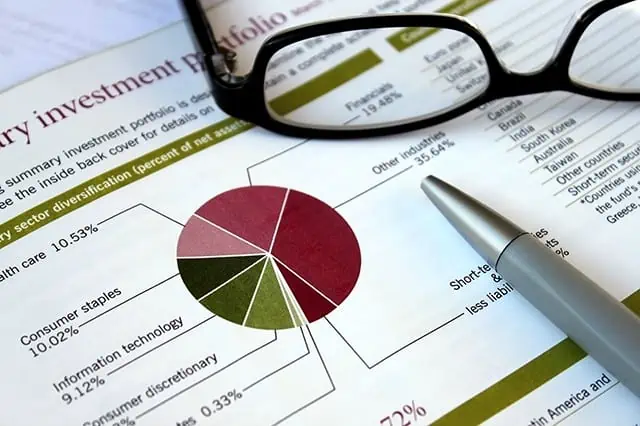
There are infinite types of mutual funds, but all can be divided into two main camps:
— actively managed funds
— passively managed funds, also known as passive funds or, most commonly, index funds
Actively managed funds have professional managers that use their discretion to buy and sell securities. Whether they are value funds, growth funds, or anything in between, they are all essentially run the same way: A manager or team of managers buys and sells stocks, bonds, or other securities in the pursuit of price returns, dividends/income, or both.
Related: The 7 Best Mutual Funds for Beginners
Index funds, in contrast, are passive. There’s no manager actively looking to “beat the market.” The fund is simply looking to copy an index—which is based on a set of rules that the index automatically applies—enjoying that underlying investment exposure. Actively managed stock funds will try to cherry pick the stocks or bonds they like best. An index fund simply buys whatever its rules say to buy, then lets that portfolio run until it’s time to “rebalance” (apply the rules again).
Related: 6 Best Stock Recommendation Services [Stock Tips + Picks]
The primary advantages of actively managed funds is that a talented manager can potentially outperform over time and may be adept at navigating a difficult period such as a bear market. But with an index fund, you generally get much lower costs in terms of management fees and trading expenses, better tax efficiency and performance that often ends up being better than that of many active managers.
What Are Balanced Mutual Funds?
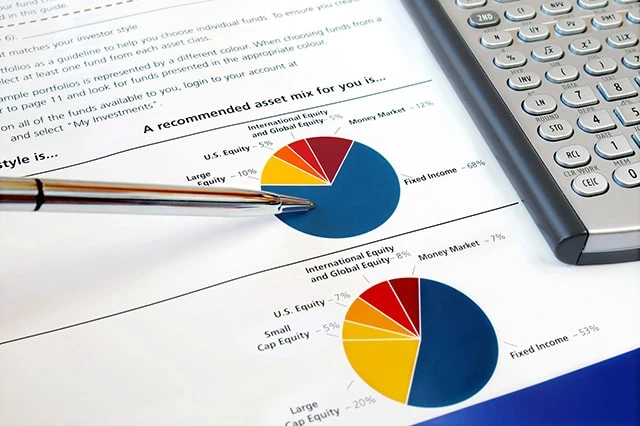
Balanced mutual funds, sometimes also called “hybrid funds” or “allocation funds,” hold both stocks and bonds. However, while the name might imply that all balanced funds hold an equal amount of stocks and bonds, that’s not quite the case.
Some balanced funds are “aggressive” and dedicate far greater assets to stocks than bonds—say, 80/20 stocks, or 70/30 stocks. Meanwhile, some balanced funds are “conservative” and invest most of their assets in bonds. Still more are much closer to a 50/50 split.
Like Young and the Invested’s content? Be sure to follow us.
How Are Mutual Funds Different From Exchange-Traded Funds?

There is a lot of overlap between traditional mutual funds and their cousins, exchange-traded funds (ETFs). That’s because exchange-traded funds are very similar to mutual funds, but with a few different traits.
Related: The 24 Best ETFs to Buy for a Prosperous 2024
Like traditional mutual funds, an ETF will hold a basket of stocks, bonds, and other securities. These can be broad and tied to a major index like the S&P 500, or they can be exceptionally narrow and focus on a specific sector or even a specific trading strategy. For the most part, anything that can be held in an exchange traded fund can also be held in a mutual fund.
But there are some major differences. When you invest in a mutual fund, you (or your broker) actually send money to the manager, who in turn uses the cash to buy stocks or other investments. When you want to sell, the manager will sell off a tiny piece of the securities the mutual fund owns and send you the proceeds. Money generally enters or exits the fund once per day.
Related: Best Target Date Funds: Vanguard vs. Schwab vs. Fidelity
Exchange-traded funds, on the other hand, trade on the New York Stock Exchange or another major exchange like a stock. If you want to buy shares, you don’t send the manager money; you just buy shares from another investor on the open market.
There are two advantages here. The first is that ETFs allow for intraday liquidity. If you want to buy or sell in the middle of the trading day—or multiple times throughout the trading day—you can.
The second advantage is tax efficiency. In a traditional mutual fund, redemptions by investors can generate selling by the manager that creates taxable capital gains for the remaining investors who didn’t sell. This doesn’t happen with ETFs, as the manager isn’t forced to buy or sell anything when an investor sells their shares.
Related: The 9 Best ETFs for Beginners
Why Does a Fund’s Expense Ratio Matter So Much?

Every dollar you pay in expenses is a dollar that comes directly out of your returns. So, it is absolutely in your best interests to keep your expense ratios to an absolute minimum.
The expense ratio is the percentage of your investment lost each year to management fees, trading expenses and other fund expenses. Because index funds are passively managed and don’t have large staffs of portfolio managers and analysts to pay, they tend to have some of the lowest expense ratios of all mutual funds.
This matters because every dollar not lost to expenses is a dollar that is available to grow and compound. And over an investing lifetime, even a half a percent can have a huge impact. If you invest just $1,000 in a fund generating 5% per year after fees, over a 30-year horizon, it will grow to $4,116. However, if you invested $1,000 in the same fund, but it had an additional 50 basis points in fees (so it only generated 4.5% per year in returns), it would grow to only $3,584 over the same period.
Related: 6 Best Stock Recommendation Services [Stock Picking + Tips]

Stock recommendation services are popular shortcuts that help millions of investors make educated decisions without having to spend hours of time doing research. But just like, say, a driving shortcut, the quality of stock recommendations can vary widely—and who you’re willing to listen to largely boils down to track record and trust.
The natural question, then, is “Which services are worth a shot?” We explore some of the best (and best-known) stock recommendation services.
Related: 12 Best Long-Term Stocks to Buy and Hold Forever
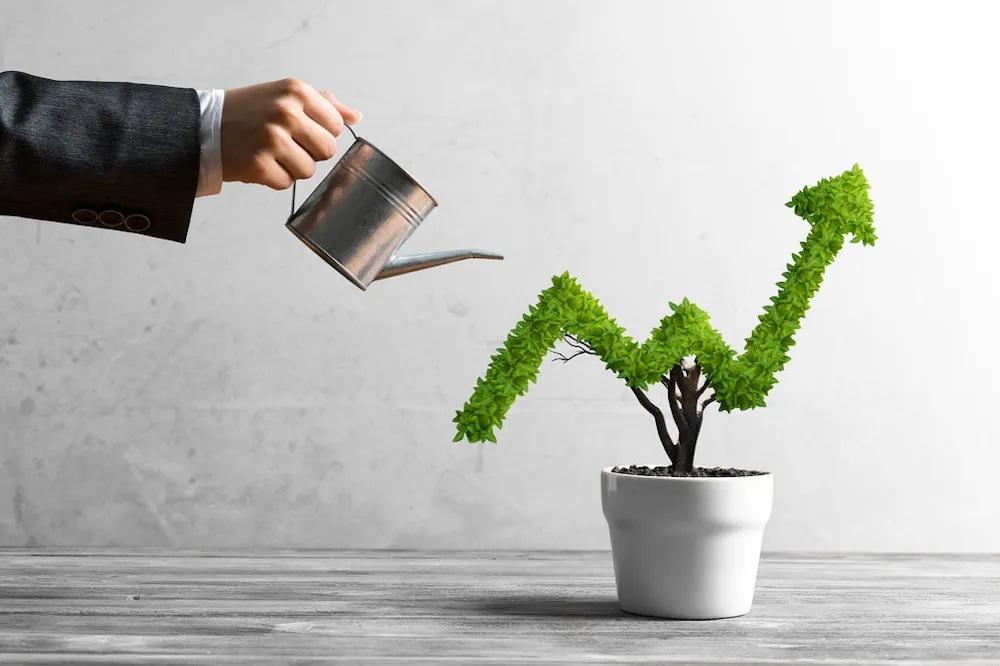
As even novice investors probably know, funds—whether they’re mutual funds or exchange-traded funds (ETFs)—are the simplest and easiest ways to invest in the stock market. But the best long-term stocks also offer many investors a way to stay “invested” intellectually—by following companies they believe in. They also provide investors with the potential for outperformance.
So if your’e looking for a starting point for your own portfolio, look no further. Check out our list of the best long-term stocks for buy-and-hold investors.
Related: 9 Best Monthly Dividend Stocks for Frequent, Regular Income

The vast majority of American dividend stocks pay regular, reliable payouts—and they do so at a more frequent clip (quarterly) than dividend stocks in most other countries (typically every six months or year).
Still, if you’ve ever thought to yourself, “it’d sure be nice to collect these dividends more often,” you don’t have to look far. While they’re not terribly common, American exchanges boast dozens of monthly dividend stocks.
Please Don’t Forget to Like, Follow and Comment

Did you find this article helpful? We’d love to hear your thoughts! Leave a comment with the box on the left-hand side of the screen and share your thoughts.
Also, do you want to stay up-to-date on our latest content?
1. Follow us by clicking the [+ Follow] button above,
2. Subscribe to The Weekend Tea, our weekly newsletter to read more about investing, spending, taxes, and more, and
3. Give the article a Thumbs Up on the top-left side of the screen.
4. And lastly, if you think this information would benefit your friends and family, don’t hesitate to share it with them!




